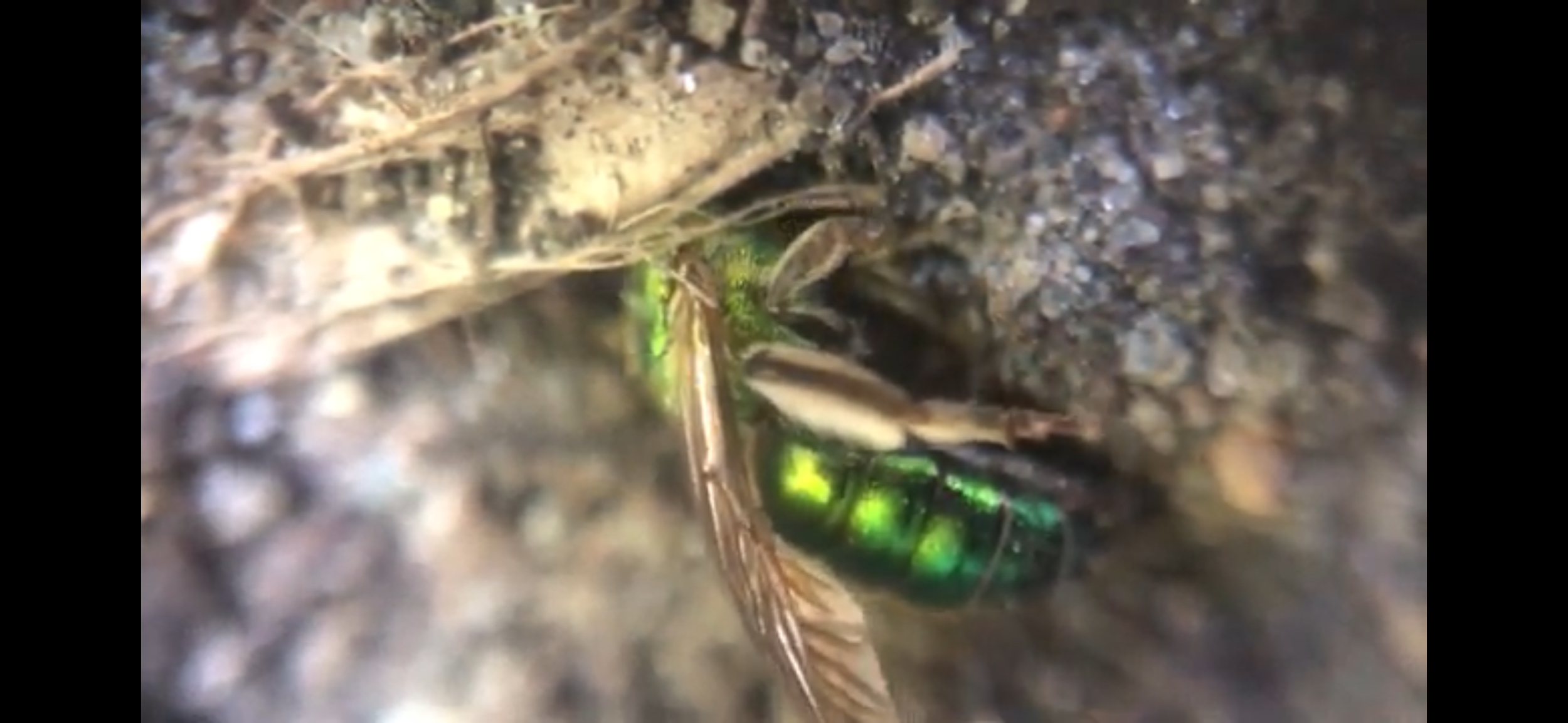Purple Green Sweet Bee
This little gem of a bee sparkles in a tiny flash of green throughout the Northeast and Midwest.
Sweat bees are solitary bees - but not anti-social bees. They live in little underground communal nests, each with its own little space to raise the next generation. Sweat bees hibernate in disturbed soils, the edges of pathways, and mulched garden beds.
They generally emerge in mid to late May, so it may be beneficial to wait a bit to start working in your garden to allow these little pollinators to wake up for the season. They are generalist pollinators with a particularly strong relationship with the Asteraceae family of flowering plants.
While you are working in your garden or hiking through a flowering meadow, you may have a little shiny green friend come and say hello.
What do you love about this particular creature?
What do they reveal to you about God and our faith?
Like Carthusian monastics, the little sweat bee lives a hybrid life of communal individuality and shows us a balance between work and rest. Their hibernation in individual dens within a communal nest shows us that rest is a communal blessing; each bee takes a turn guarding the entrance from predators.
They are their sisters’ keepers. There is also an unapologetic yet gentle flash of beauty in the bodies of these little creatures. The metallic emerald shine that emerges from the dirt each spring is like the splendor of the Resurrection, unexpected beauty bursting forth after the long, cold winter, with a simple task - bring life to others through simply wandering from flower to flower. They show us God’s gift of beauty, not just practicality.
These little sweat bees could fulfill their purpose of pollination without having a shiny green body, but God wants us to have not just bread but roses too.
Author - The Rev. Jimmy Solano Pickett
The Rev. Jimmy Solano Pickett is a priest in the North Quabbin region to the east of the Connecticut River Valley with a passion for community food resilience and sustainable agriculture.
God of moss and mountains, thank you for the diversity of creatures that praise you by their being. May we likewise show forth your glory with our bodies, hearts, and lives, in the name of your Son Jesus, the firstborn of Creation. Amen.
Prayer by Rev. Rachel Field
